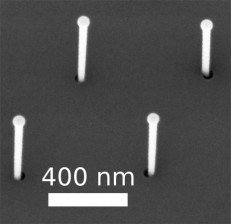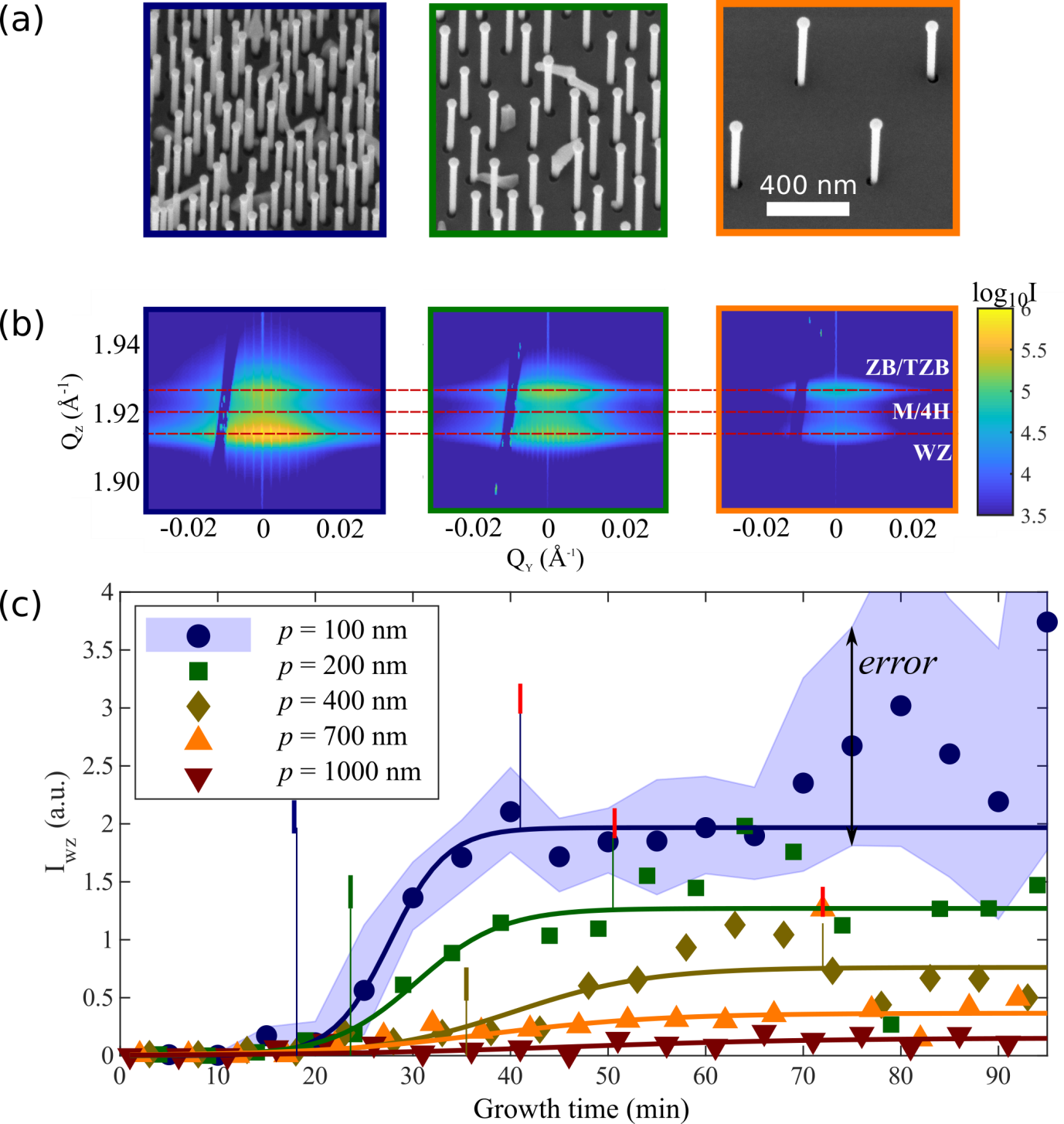
Flux shadowing affects crystal structure in patterned molecular beam epitaxial growth of self-catalyzed GaAs nanowires
- Date: 2019
Flux shadowing affects crystal structure in patterned molecular beam epitaxial growth of self-catalyzed GaAs nanowires
For future applications of nanowires in devices, close control of their position, number density and shape is a prerequisite. This can be achieved by selective-area growth, which uses a mask with a pattern of holes on the substrate to allow for nanowire growth exclusively in these predefined holes while offering epitaxial contact to the substrate.
Using time-resolved in situ X-ray diffraction we demonstrate here that the number density of nanowires and their arrangement in ordered arrays have an impact on the crystal structure of self-catalyzed GaAs nanowires grown by molecular-beam epitaxy (MBE).
In order to investigate the effect of the number density on polytypism, we prepared patterned Si substrates which provide several arrays of holes with different nanowire spacing (pitch) and hole diameter. By this approach, identical growth conditions for all arrays can be guaranteed and the effect of pitch size and hole diameter on the crystal structure can be investigated.
The in situ X-ray diffraction experiment during the MBE growth of nanowires on such samples was performed at the beamline P09 at the PETRA III synchrotron at DESY in Hamburg, which provides a suitably small X-ray beam to illuminate only one single array. By consecutively illuminating the arrays, we monitor all different pitches separately in a time-resolved manner during growth.
We were able to demonstrate that the crystal structure tends to produce more wurtzite for small pitch sizes, corresponding to higher nanowire number density. Moreover, we could pinpoint the onset of wurtzite nucleation during the time-resolved experiment for different pitches. By additional theoretical calculations, we could show that the reason for the wurtzite formation is the onset of the shadowing of the reflected Ga-flux into the droplets by neighboring nanowires. At that point the effective Ga-flux in the droplet is reduced, leading to different nucleation probabilities.

Figure 1: (a) SEM images of different arrays (100, 200 and 700 nm pitch) acquired under 30° viewing angle. (b) X-ray reciprocal space maps of the GaAs (111) Bragg reflection for the same arrays with the reflections for zinc blende (ZB) and wurtzite (WZ), as well as for the mixed phase (M/4H). (c) Time evolution of the integrated WZ intensity for different arrays.
Understanding the shadowing of the Ga-flux is a crucial factor during the growth of such nanowire arrays, and to avoid polytypism it needs to be optimized accordingly during growth. However, flux shadowing could also be used intentionally to manipulate the crystal structure.
Schroth, P.; Al Humaidi, M.; Feigl, L.; Jakob, J.; Al Hassan, A.; Davtyan, A.; Küpers, H.; Tahraoui, A.; Geelhaar, L.; Pietsch, U.; Baumbach, T.: Impact of the Shadowing Effect on the Crystal Structure of Patterned Self-Catalyzed GaAs Nanowires, Nano letters, 19 (2019), 4263–4271 [link: doi:10.1021/acs.nanolett.9b00380 ]
